Alaska Fish & Wildlife News
January 2017
The Wildlife Action Plan
Keeping Wildlife from Becoming Endangered
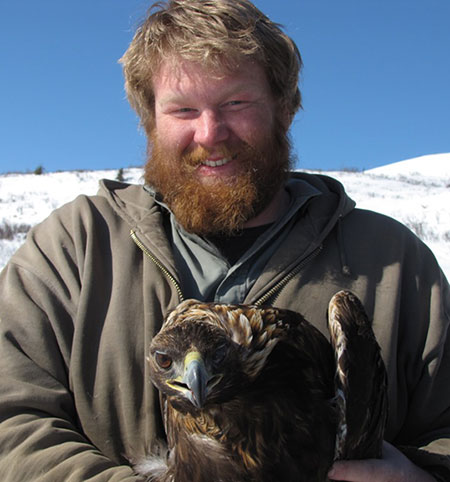
Keeping wildlife from becoming listed under the Endangered Species Act is good for industry, Alaskans and wildlife.
That’s a key premise behind Alaska’s new Wildlife Action Plan, approved by the U.S. Fish and Wildlife Service on Dec. 23, 2016. Working with conservation and industry partners, each state has developed a State Wildlife Action Plan assessing the status of its wildlife and outlining conservation actions necessary to sustain them. Collectively, these plans form a nationwide strategy led by states to conserve wildlife and prevent them from needing protection under the Endangered Species Act.
First published in 2006, the revised Alaska Wildlife Action Plan was published in 2015. The plan is required by the federally funded State Wildlife Grant program.
Although the amount varies each year, Alaska typically receives about $2.5 million in State Wildlife Grant money, which is shared between the Sport Fish, Wildlife Conservation, and Habitat Divisions. The grants provide resources to address conservation issues, and to recover species in decline so they will not be put on the Endangered Species Act (ESA) list.
Chris Krenz is the coordinator of the Threatened, Endangered and Diversity (TED) Program at the Alaska Department of Fish and Game, who helps oversee the plan and the State Wildlife Grant funds for the Division of Wildlife Conservation.
“When a species is declining is the time to take action,” said Krenz. “We want to take action before the situation is dire and avoid the need for listing under the ESA.”
Krenz said once a species is listed, the federal government steps in and gives the benefit of the doubt to the species’ conservation. A wide range of precautionary actions may take place. Access and development may be restricted in areas designated as critical habitat, and activities like commercial fishing or logging may be curtailed or modified.
“Conservationists want common species to stay common, and industry does not want added regulations,” he said. “This plan, and the federal funding that comes with it, is a win-win for Alaska.”
The Plan and the Animals
The 2015 State Wildlife Action Plan helps identify species with the greatest conservation need (SGCN). The 2015 Action Plan identifies 326 species as species of greatest conservation need. Species are identified using multiple criteria. The most intuitive is species whose population is small, declining or under significant threat; but it also includes species that are culturally, ecologically or economically important, including all of the Pacific salmon species. The plan also identifies “stewardship species,” animals that may be quite common.
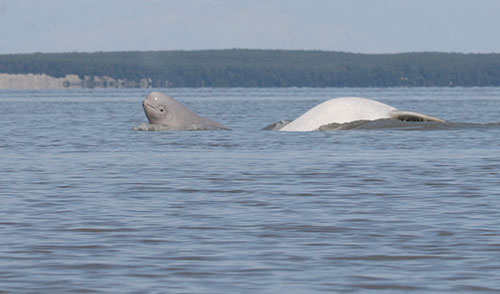
“Some species exist almost entirely within Alaska’s borders, and we have a higher stewardship responsibility for those species” Krenz said.
This includes migratory birds that mostly nest and breed in Alaska. Alaska supports 100 percent of the U.S. breeding population of gyrfalcons, rough-legged hawks and snowy owls. Some other examples are the Alaska marmot, the Aleutian collared lemming, the Arctic warbler, and the Alaska hare - which is also culturally important. The chestnut-backed chickadee, ubiquitous at bird feeders across Southeast Alaska, is a stewardship species.
Species may be culturally important because they are hunted or trapped. Some culturally important species may be excluded from the plan if adequate funding for their conservation is available from other sources. Resources to protect, monitor and manage most “game” animals in Alaska are available from other sources (such as Pittman-Robertson funds) so they are excluded from the Wildlife Action Plan.
The plan also identifies “sentinel species,” species that are indicators of environmental change. Examples are river otter, sea otter, northern harrier, pigeon guillemot and bristle-thighed curlew.
Some species are at risk, and are considered a high priority. These include Cook Inlet beluga whales, which have an estimated population size of about 300, and their status is as a declined, depleted population. Spectacled eider populations are declining and they are considered vulnerable. Some of Alaska’s Steller sea lions – the Western Distinct Population Segment – are listed as threatened. The eastern segment (found in Southeast waters) is growing and was delisted in 2013.
The olive-sided flycatcher is a relatively common species, but populations have declined considerably over the past few decades.
“We want to understand why these birds are not doing well, and whether or not there are problems for this flycatcher in Alaska,” Krenz said..
Fairbanks-based biologist Julie Hagelin is part of the TED program, and she and her colleagues in Alaska and Canada have tagged a number of these small songbirds with geolocators that enable biologists to track them. They are finding that the birds migrate to Ecuador and Peru, which is helping biologists understand what may be driving the decline and focus recovery efforts where they will be most effective.
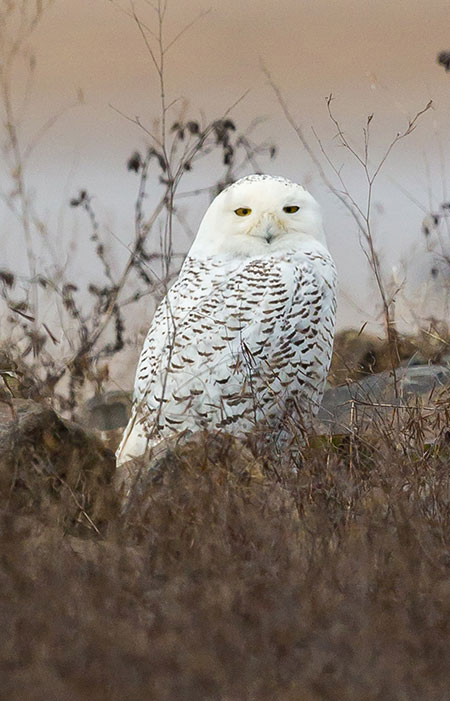
Bats are included in the Wildlife Action Plan for many states, including Alaska, for several reasons.
“Wind power development is a huge issue for bats, especially migratory bats,” said Karen Blejwas, a wildlife biologists with the TED program.
The other big issue with bats is white-nose syndrome. Some species, including the most common bat in North America, the little brown bat, are suffering huge losses because of white-nose syndrome, a fungal disease that affects hibernating bats. The disease has spread gradually westward from the Northeast states over the past decade, but until this year was almost exclusively east of the Mississippi River. In the spring of 2016, a hiker near Seattle found a dying bat on a trail – the first western bat discovered with the disease.
The discovery of white-nose syndrome in Washington was a wakeup call, Blejwas said.
“It could get here anytime. Prior to that those of us in the West thought it would spread gradually, as it had back East, but it could appear anytime. So it’s good we’ve been doing the work we’ve done.”
She said biologists have collected baseline data on Alaska’s bats in Southeast, South Central, the Interior, and in the Copper River area. “There’s been monitoring in the National Parks, on BLM land, and in wildlife refuges, so it’s not just Fish and Game,” she said.
Most of the work in Alaska involves acoustic monitoring, looking at activity and the location and distribution of bat species. Biologists are asking: when do bats emerge in the spring, what periods are they most active, when do they disappear in the fall, and what is their relative abundance and activity at various sites.
Out of concern for white-nose syndrome, the Fish and Wildlife Service is planning to assess whether or not the little brown bat should be listed under the ESA. The little brown bat is the most common and widespread bat in Alaska. The research that Blejwas and others are doing will make sure the species is not listed because of a lack of information and understanding of the species needs in Alaska.
Special Areas
ADF&G’s Habitat Division uses State Wildlife Grant money to support special areas planning.
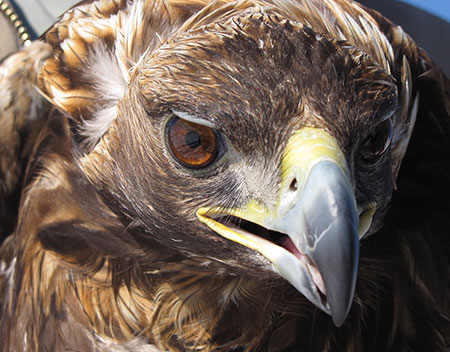
The Alaska Legislature has designated 32 “special areas” across the state comprising more than 3.2 million acres. These special areas include 12 game refuges, 17 critical habitat areas, and three wildlife sanctuaries. Willow Mountain is one area that recently received attention. In the Talkeetna Mountain Range, the Willow Mountain Critical Habitat Area supports some of the largest concentrations of moose found anywhere in the state. The area is open to most public uses including hunting, trapping, camping and snow machining, but other uses may require a permit – as determined by the management plan.
Megan Marie, acting Fish and Game coordinator for the Habitat Division, said the management plans guide the department’s oversight of the land, and the goals and objectives of the special areas. This includes activities that can and can’t be done in some special areas, and some that might need permitting.
Aquatic Species
Kachemak Bay National Estuarine Research Reserve (KBNERR), formerly managed by ADF&G, and now part of University of Alaska system, works with the Division of Sport Fish on several ongoing aquatic species projects funded by State Wildlife Grants. Sheila Cameron, the Federal Aid Coordinator for the Sport Fish Division, said that includes salmon related projects as well as projects related to ocean currents and invasive species monitoring.
The salmon projects focus on juvenile salmonids, and the importance of headwater stream productivity and estuaries. Monitoring of the Fox River and Anchor River estuaries provide insights into how young salmon of different sizes and ages use different parts of the estuaries, how they interact with other species, respond to tides, water temperature, the influx of fresh water, and other environmental changes. Estuaries are particularly sensitive to development and climate change and understanding their importance to species is important to guide future activities.
Kachemak Bay and Fox River Flats are designated critical habitat areas, and KBNERR is monitoring water circulation patterns as well as detection of harmful or invasive species such as non-native tunicates and crabs. Early detection of harmful algal blooms (such as the red tide which is responsible for Paralytic Shellfish Poisoning) can alert the stateside network to potential human health issues for the region. Kachemak Bay hosts a number of mariculture sites, and this growing industry relies on KBNERR for detecting and documenting harmful algal blooms. Monitoring of the water circulation patterns – and how these gyres concentrate plankton and nutrients helps to improve responses to possible harmful algal blooms and sources of pollution.
Working the Action Plan – and the Future
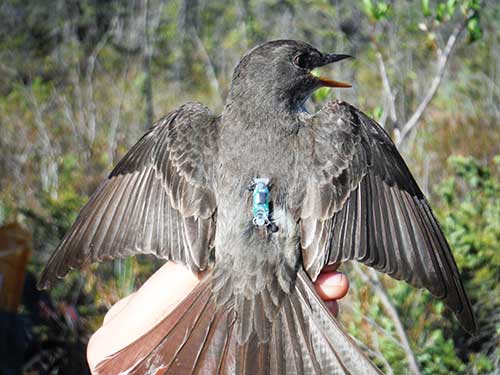
The amount of State Wildlife Grant money varies year to year, and is divided up between states and territories. About $50 million was recently allocated, and Alaska’s share was just about $2.5 million. That’s a far cry from what would be needed to fully implement the plan, Krenz said.
“We have a great Wildlife Action Plan, but we are essentially conducting triage,” he said.
That’s true across the country. To address that, the Association of Fish and Wildlife Agencies formed a Blue Ribbon Panel of wildlife managers, scientists and industry leaders (co-chaired by former Wyoming governor David Freundthal and John Morris, the founder of Bass Pro Shops) to evaluate current conservation funding mechanisms and recommend improvements.
The panel released a report in March 2016 offering recommendations on sustaining America’s diverse fish and wildlife resources. They wrote that threats such as a habitat loss, invasive species, extreme weather and disease are taking an increasing toll on birds, mammals, fish, frogs, turtles and insects. “An environment managed sustainably for fish and wildlife helps safeguard the air we breathe, the water we drink, the food we eat, the scenery that we view and the $646 billion outdoor recreation economy.”
The panel recommended that congress dedicate funds annually to help states implement measures that have been proven to prevent threatened and endangered species listings. In response, Don Young (R-Alaska) and Debbie Dingell (D-Michigan) introduced the Recovering America’s Wildlife Act (H.R. 5650) in the House of Representatives in July 2016. This bi-partisan legislation would dedicate $1.3 billion using existing revenues from energy development on federal lands and waters for states to implement their wildlife action plan.
This will provide resources to conserve wildlife species before they become threatened or endangered, to recover species already imperiled, and to keep common species common.
Subscribe to be notified about new issues
Receive a monthly notice about new issues and articles.
